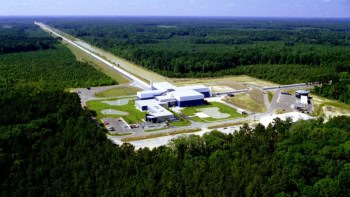
Hawaii’s Supreme Court has ruled that the construction permit for the $1.4bn Thirty Meter Telescope (TMT) on top of Mauna Kea mountain is invalid. Construction of the telescope has been on hold since March, when hundreds of native Hawaiians and their supporters protested and prevented building crews from entering the site. The court ruling is a fresh blow to the project, with the telescope’s backers now having to restart the permit process.
With a 30 m primary mirror made of 492 hexagonal segments, the TMT will be the largest and most powerful instrument on Mauna Kea, which is already home to 13 others. The TMT will sit on a plateau about 150 m below the summit – a location picked to reduce the telescope’s visibility from the majority of the island.
In its ruling on 2 December, the court claimed that Hawaii’s Board of Land and Natural Resources (BLNR) should not have approved the permit in 2011 because it failed to follow due process when awarding it. “Quite simply, the board put the cart before the horse when it issued the permit before the request for a contested case hearing was resolved and the hearing was held,” the ruling notes. “Accordingly, the permit cannot stand.”
The court decision now requires the TMT to go through the process again that will first involve a “contested case hearing”, which must be heard first before a permit can be issued. The decision by the court will result in delays beyond the targeted 2023 construction date, although how long is currently unknown.
“I’m not surprised the court looked at the permitting process itself, since the actual case for building the TMT – that it will be an environmentally and culturally responsible observatory that benefits the educational and economic future of Hawaii – is and remains exceptionally strong,” says Thayne Currie, an astronomer with the Subaru Telescope on Mauna Kea. “Considering the tremendous scientific discoveries and opportunities that the TMT will afford, the wait will be worth it.”
Respecting the decision
In a statement, Henry Yang, chair of the TMT International Observatory Board of Directors, noted that the TMT collaboration is now considering its next steps. “We thank the Hawaii supreme court for the timely ruling and we respect their decision. TMT will follow the process set forth by the state, as we always have,” says Yang. “We appreciate and thank the people of Hawaii and our supporters from these last eight-plus years.”
Groups opposed to the TMT’s construction have, however, welcomed the decision. Kamahana Kealoha, head facilitator of Sacred Mauna Kea Hui, says the group is “elated” at the move to annul the permit, which he says has been acquired “through an immorally and unethically manipulated process that has been negligently overseen by the BLNR”. “Our goal has always been to systematically secure the Mauna,” Kealoha told physicsworld.com. “The revoking of the construction permit is essential for us to succeed in protecting the mountain summit and the endangered-species environment from further development by this 18-storey monstrosity.”
Kealoha adds that they now hope that TMT’s backers will “see red flags and pull out”. “Quite frankly, the resistance is here to stay, and we plan to see to it that the TMT is not built,” he says. “This could be more costly than the $1.4bn already appropriated and, speaking for myself and my group, we will continue to make sure the TMT being built on our sacred summit is not a profitable venture for investors, as we already have.”
Since 1968, the University of Hawaii has leased more than 44.5 km2 of land on Mauna Kea from the Hawaiian Department of Land and Natural Resources (DLNR) for scientific purposes, with the highest 2.1 km2 devoted to astronomy research. Two months after the protests in March, the governor of Hawaii, David Ige, noted that the TMT had the right to proceed, and that all of the necessary permits for the observatory had been obtained. However, he criticized how the University of Hawaii has managed the land on Mauna Kea, outlining that a quarter of the telescopes on the summit should be completely dismantled and each site returned to its natural state by the time the TMT is operational.



